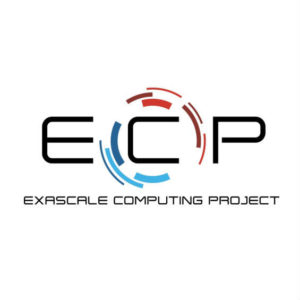 In this video from SC18, Mike Bernhardt from the Exascale Computing Project talked with Salman Habib of Argonne National Laboratory about cosmological computer modeling and simulation.
In this video from SC18, Mike Bernhardt from the Exascale Computing Project talked with Salman Habib of Argonne National Laboratory about cosmological computer modeling and simulation.
A senior scientist and computational scientist, Habib is a member of the High Energy Physics and Mathematics and Computer Science Divisions at Argonne, and a senior member of the Kavli Institute for Cosmological Physics at the University of Chicago. For ECP, he leads the ExaSky project, which is computing the cosmos at extreme scales.
Habib’s discussion with Bernhardt took place near the screening of an ExaSky movie in the US Department of Energy (DOE) booth. The movie provided a flight through a simulation of the evolution of the universe, from a featureless void to a stunning cosmos of complicated structures and galaxies.
Habib explained that the ExaSky project is focused on developing a caliber of simulation that will use the coming exascale systems at maximal power.
Clearly, there will be different types of exascale machines,” he said, “and so they [DOE] want a simulation code that can use not just one type of computer, but multiple types, and with equal efficiency.”
He said that besides having such versatility, the simulation code must add more physics capabilities: “Currently, the movie shows a gravity-only simulation, but the team is adding gas dynamics and many astrophysical feedback mechanisms.”
 Different approaches, or solvers, for exploring gas dynamics exist, all of which have various strengths and weaknesses. “There are methods that are known to be very accurate, but they turn out to be very slow; and there are methods that are fast, but, unfortunately, can have errors,” Habib explained.
Different approaches, or solvers, for exploring gas dynamics exist, all of which have various strengths and weaknesses. “There are methods that are known to be very accurate, but they turn out to be very slow; and there are methods that are fast, but, unfortunately, can have errors,” Habib explained.
A technique for solving gas dynamics called smooth particle hydrodynamics (SPH) is very powerful yet insufficient in certain situations. An effort led by ExaSky team member Nicholas Frontiere, a graduate student at the University of Chicago, devised a new method that extends SPH such that its power is retained, and its shortcomings are remedied. The team also has succeeded in added this new method to the ExaSky cosmology code. The first of two papers on this effort was recently published.
Habib said simulations of the universe have advanced tremendously since they began in the mid-1980s because of the power of computers and the surprisingly comprehensible elegance of the universe. As both an observer of and participant in scientific progress, he has 27 years of experience at DOE labs, which he described as in equal measure exciting and intellectually challenging, whether exploring ideas as an individual or as part of a team.




